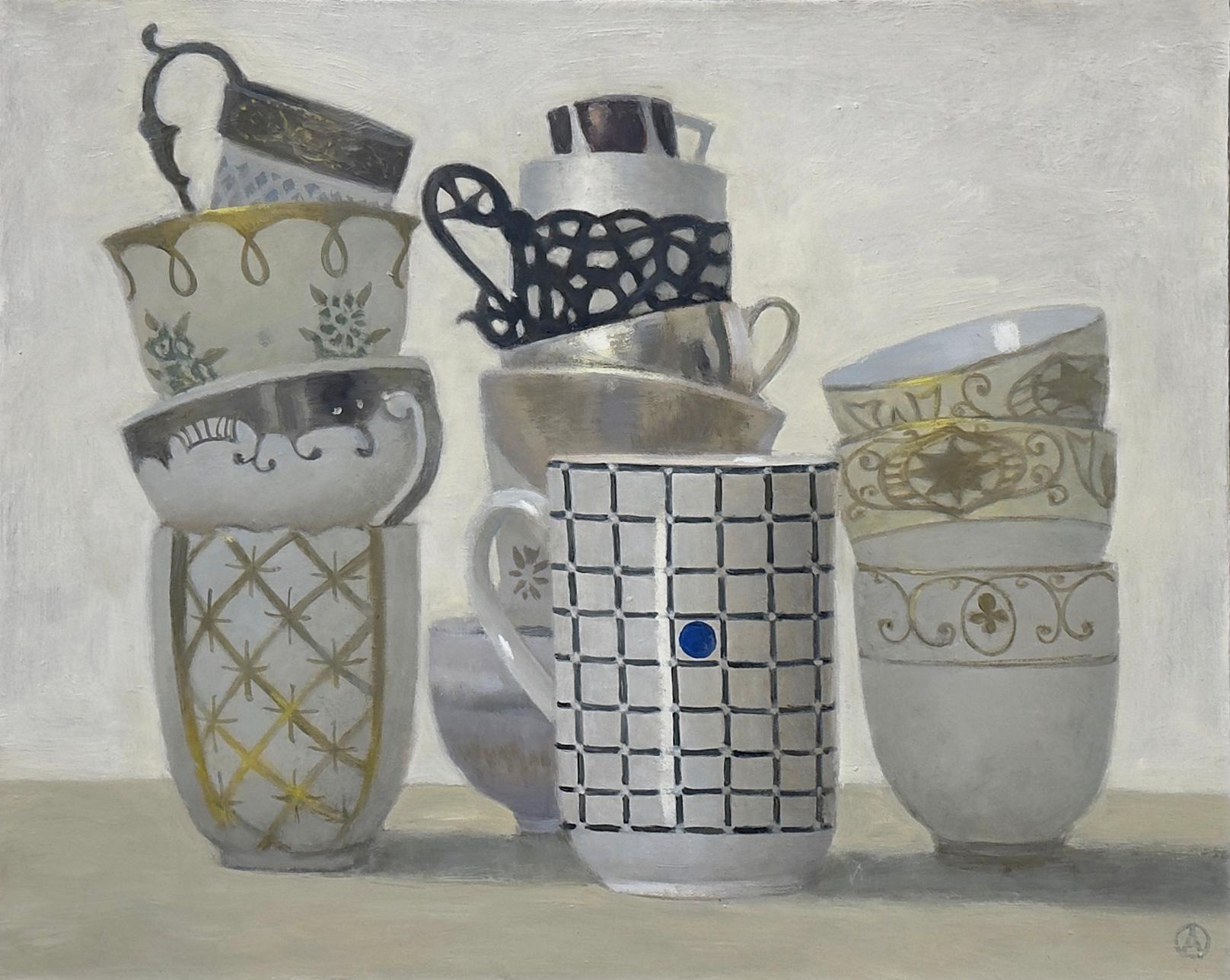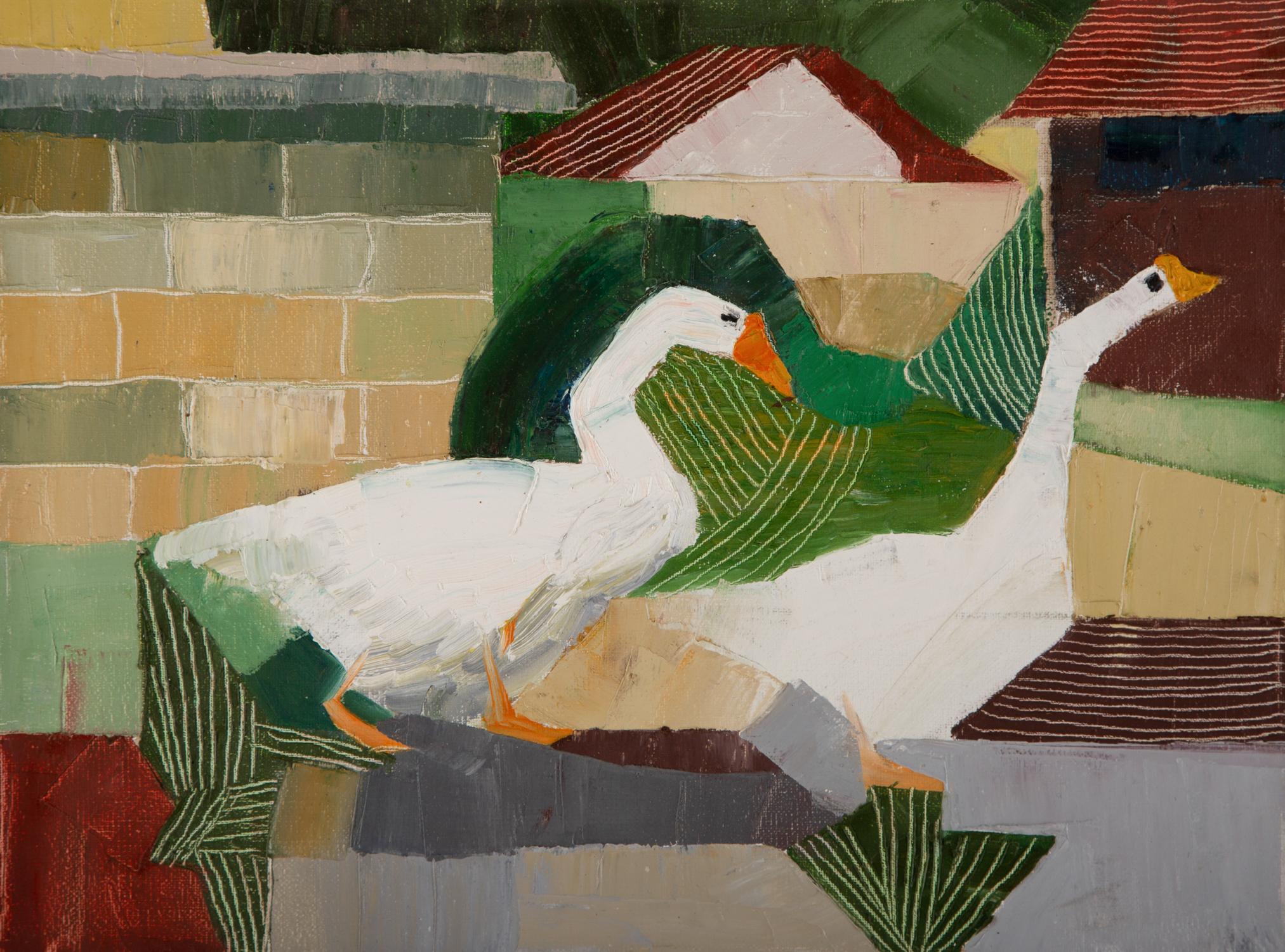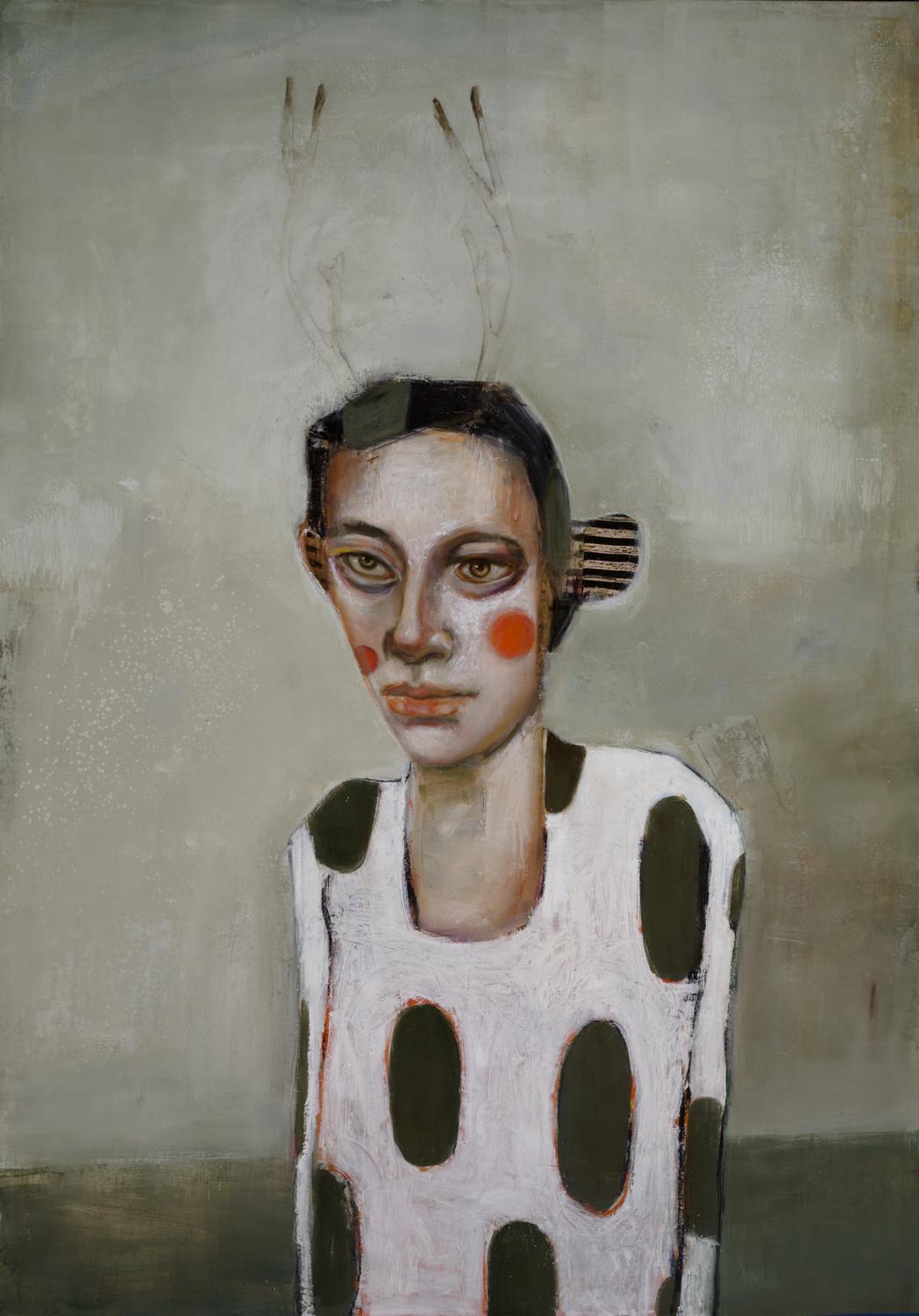Frank J. ReillyLiberty Bell
About the Item
- Creator:Frank J. Reilly (1906 - 1967)
- Dimensions:Height: 30 in (76.2 cm)Width: 40 in (101.6 cm)
- Medium:
- Period:
- Condition:
- Gallery Location:Fort Washington, PA
- Reference Number:1stDibs: LU38431071173
Frank J. Reilly
Frank J. Reilly was noted as "the No. 1 art teacher in America." Reilly is known for developing a means of organizing the palette. His value studies and chroma organization are still taught as the primary methods of oil paint organization. Reilly studied with Frank DuMond at the Art Students League of New York. He taught at the Grand Central School of Art, The Art Students League of New York and other art schools as well as establishing his own art school. Reilly was the main influence on George Passantino. He is credited with the mosaic mural in The Bronx High School of Science's front lobby. Reilly's influence continues today through the teaching and art of Michael Aviano and Jack Faragasso as well as their students Jon deMartin and Graydon Parrish. The Legacy of Frank J. Reilly by Jack Faragasso, from LINEA Journal of the Art Students League, Summer 2006, stated that one of the most maligned and misunderstood artist instructors of the Art Students League was the late Frank J. Reilly. Mr. Reilly was a feisty Irish-American endowed with great energy and charisma. He inspired fanatic devotion and loyalty from his students. His classes were always jam-packed morning, afternoon and night. On his off days he would drive to the League's studios in Woodstock, New York to teach landscape and outdoor figure painting. Somehow he found time to do illustrations, write articles on art, conceive and work on murals and do an occasional fine art easel painting. Married but childless, Mr. Reilly regarded his pupils as his family and sought to relate to them as such. He sought to give them the best training possible, and in order to introduce them to the art world, arranged contests with national magazines, paperback publishers, and even Portraits, Inc.
- ShippingRetrieving quote...Ships From: Fort Washington, PA
- Return PolicyA return for this item may be initiated within 14 days of delivery.
- Trout FishingBy Joseph Francis KernanLocated in Fort Washington, PACover of Outdoor Life magazine, April 1933. Image of a man with fishing gear in front of a calendar. Joseph Francis Kernan was a sportsman all of his life and the majority of his subjects featured, as he described it, "the human side of outdoor sports, hunting, fishing and dogs." These were the ideal subjects for magazine covers and his work appeared on all of the major - and some minor- magazines, including The Saturday Evening Post, Collier's, Liberty, The Country Gentlemen, Capper's Farmer, The Elks, Outdoor Life, and The Associated Sunday Magazines. His work was also commissioned for calendars, and advertisers such as Fisk Tires, International Harvester...Category
1930s Other Art Style Paintings
MaterialsOil, Canvas
- Hook Oars and Stand ByBy Arthur SarnoffLocated in Fort Washington, PAMedium: Oil on Canvas Dimensions: 24.00" x 36.00" Signature: Signed Lower LeftCategory
Mid-20th Century Figurative Paintings
MaterialsOil, Canvas
- Untitled, Harper's Monthly 1917By William Frederick FosterLocated in Fort Washington, PAMedium: Oil on Canvas Signature: Signed Lower Left Harper's Monthly, 1917.Category
1910s Figurative Paintings
MaterialsOil, Canvas
- Playing the Harmonica, Post CoverBy Eugene IverdLocated in Fort Washington, PASaturday Evening Post Cover, October 6, 1934Category
20th Century Portrait Paintings
MaterialsCanvas, Oil
- "Marriage is a Private Affair, " story illustration for The Ladies' Home JournalBy Andrew LoomisLocated in Fort Washington, PAStory illustration for “Marriage is a Private Affair” by Judith Kelly, published in the Ladies’ Home Journal, March 1941, page 13. Featuring a young bride and groom embracing as a ma...Category
20th Century Other Art Style Paintings
MaterialsCanvas, Oil
- Two Men in Deck Chairs, Saturday Evening Post CoverBy Leslie ThrasherLocated in Fort Washington, PAMedium: Oil on Canvas Signature: Signed Lower Right Sight Size 26.00" x 32.00", Framed 40.00" x 36.00" Two men in deck chairs. One of the men is looking very sick and pale, grippin...Category
1930s Other Art Style Paintings
MaterialsCanvas, Oil
- pocket dark blue sloes, Baroque Still Life Painting, Small Art, Fruit ArtBy Dani HumberstoneLocated in Deddington, GBPocket Dark Blue Sloes is an original still-life painting by artist Dani Humberstone. This painting is a small scale renaissance inspired still life in a photorealistic style and sol...Category
2010s Realist Still-life Paintings
MaterialsCanvas, Oil
- TEACUPS - Contemporary Still Life / Russian American ArtistBy Olga AntonovaLocated in New York, NYOriginal oil painting by Olga Antonova Olga Antonova (b. 1956, Volgograd, Russia) completed her classical art training at the Ilya Repin Institute of Painting in St. Petersburg, Russ...Category
2010s Contemporary Still-life Paintings
MaterialsCanvas, Oil
- Dakini, Oil on canvas, mysterious and whimsical pop art portrait masterBy Michele MikesellLocated in Dallas, TXMICHELE MIKESELL b. 1973, Alabama, USA In 2002, Michele Mikesell earned her Bachelor of Fine Arts with a minor in graphic design from Texas Women's University in Denton, TX. Mikesel...Category
2010s Contemporary Figurative Paintings
MaterialsCotton Canvas, Oil
- Shuai Liu Animal Original Oil Painting "Chant Goose"Located in New York, NYTitle: Chant Goose Medium: Oil on canvas Size: 12 x 15.5 inches Frame: Framing options available! Condition: The painting appears to be in excellent condition. Note: This painting is...Category
21st Century and Contemporary Contemporary Animal Paintings
MaterialsOil, Canvas
- Zhao Wang Surrealist Original Oil Painting "Let's Travel 2"Located in New York, NYTitle: Let's Travel 2 Medium: Oil on canvas Size: 8 x 8 inches Frame: Framing options available! Condition: The painting appears to be in excellent condition. Note: This painting is unstretched Year: 2000 Circa Artist: Zhao Wang...Category
21st Century and Contemporary Contemporary Animal Paintings
MaterialsOil, Canvas
- Fylgia, animal figurative portrait, mysterious and whimsical oil paintingBy Michele MikesellLocated in Dallas, TXMICHELE MIKESELL b. 1973, Alabama, USA In 2002, Michele Mikesell earned her Bachelor of Fine Arts with a minor in graphic design from Texas Women's University in Denton, TX. Mikesell completed her Master of Fine Arts at the University of Oklahoma in Norman in 2004. “Creating individuals is what I find most interesting in the studio. It is my hope that these portraits will be familiar characters to the viewer, subjects we recognize and identify with. My work consistently travels along a general vein of the universal human experience. This particular group of paintings...Category
2010s Contemporary Figurative Paintings
MaterialsCotton Canvas, Oil





